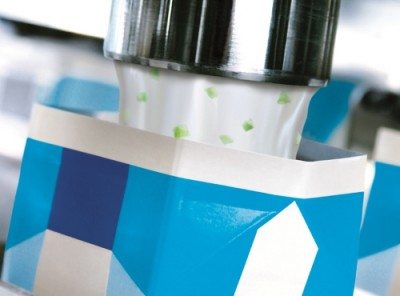Milk and milk products are protected from contamination and the environment in carton packs while retaining quality.
If left unopened, milk products in aseptic cartons can be stored for prolonged periods without refrigeration.
These carton packs offer convenience to consumers as they are lightweight, unbreakable and easy to transport.
One of the most important jobs of any packaging is protecting food and safeguarding the quality of the product.
In aseptic carton packs, milk products are hygienically and securely protected from light and air, thereby retaining the product’s flavor, aroma, color, nutrients and vitamins over an extended period – even without refrigeration and preservatives.
DNA of a carton pack
A carton pack is composed primarily of raw paperboard and polymers.
About 75% of the carton pack is made of cardboard, which gives the package its stability.
While the inner polymer layers form a liquid barrier for the beverage, the outer layer keeps moisture out.
Added to this is a razor-thin aluminum layer, which protects the food from light, oxygen and external odors.
Using cartons in food factories
Each year, SIG Combibloc’s production plants manufacture packaging material for more than 20 billion carton packs.
Its customers receive the packaging material as flat pre-fabricated sleeves, printed with the required design, marked with fold lines and pre-sealed.
This means the longitudinal seam has already been sealed.
At the factories, each carton pack is shaped and the base sealed inside the filling machines from SIG Combibloc.
The product, which has already been sterilized using ultra high temperature (UHT) equipment, is filled into the sterilized carton packs in the aseptic zone of the filling machine.
After the filling process, the carton packs are ultrasonically sealed above the fill level, and not through the product.
This protects the food and its quality, as it prevents product ingredients from getting caught in the sealed seam.
Once the carton pack has been sealed, optional closures may be applied to the packaging externally, enhancing aseptic safety.
Story by Matthias Krusche, global market segment manager, SIG Combibloc.










